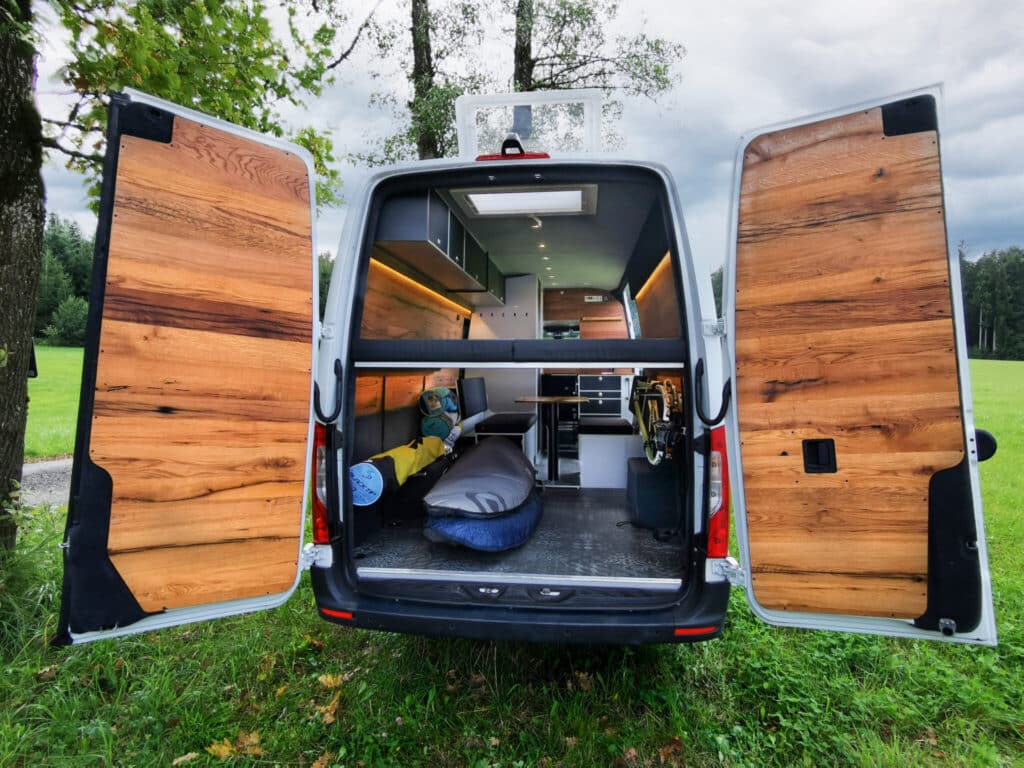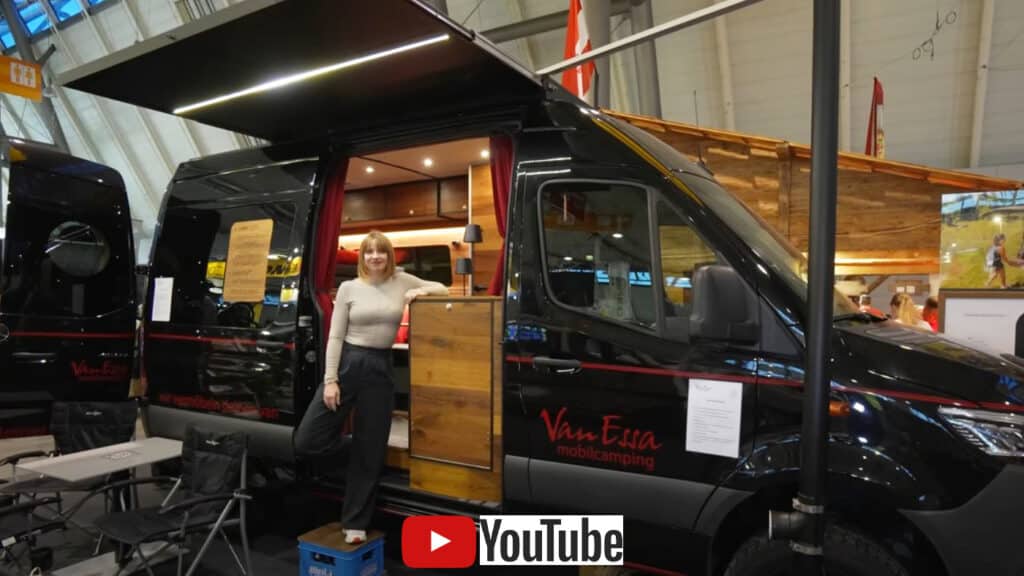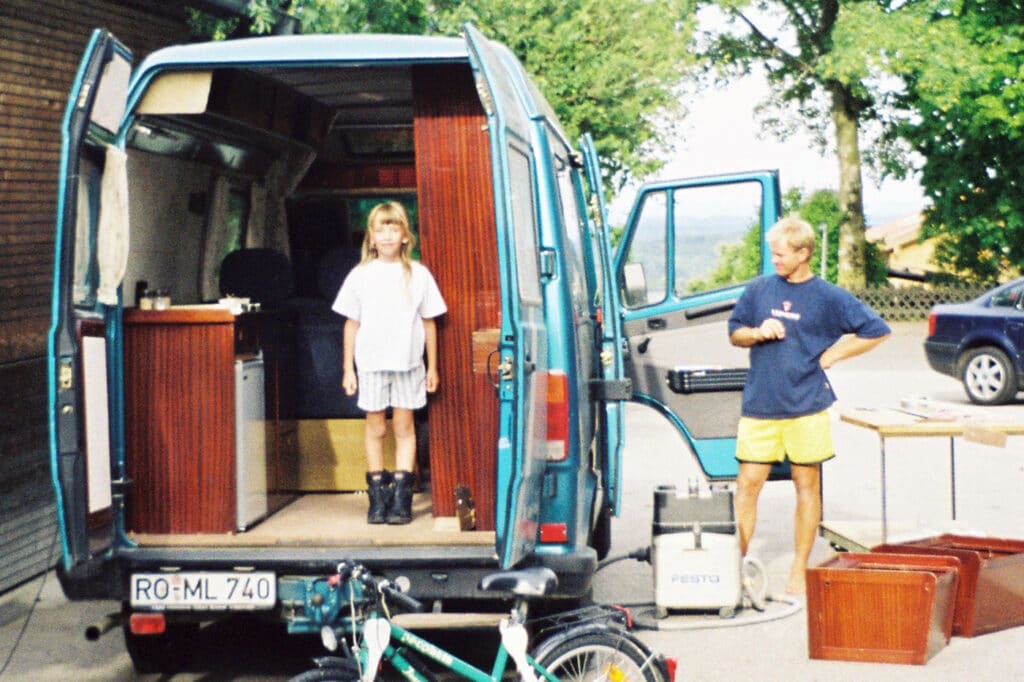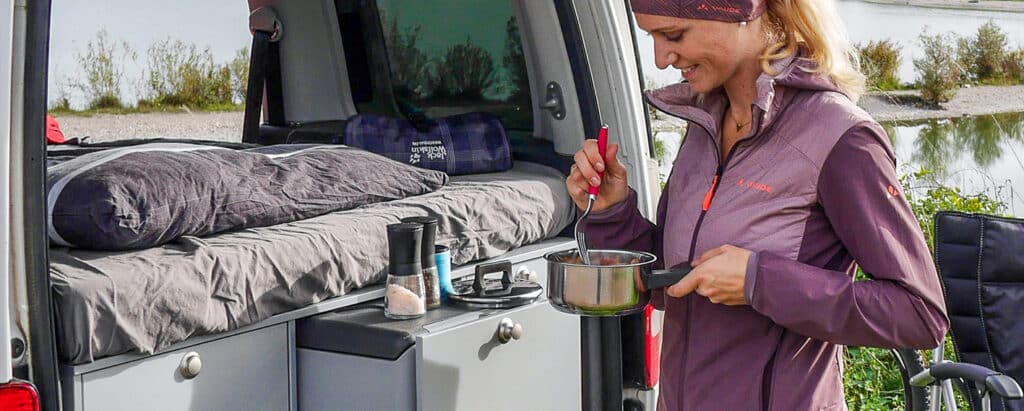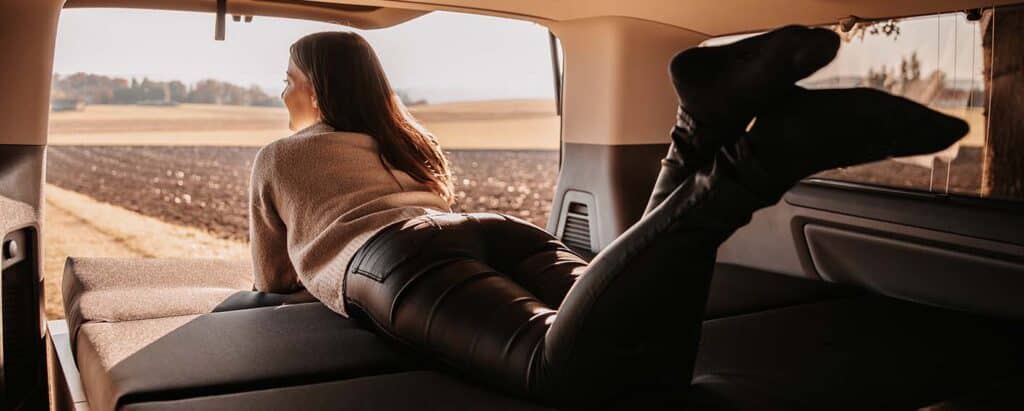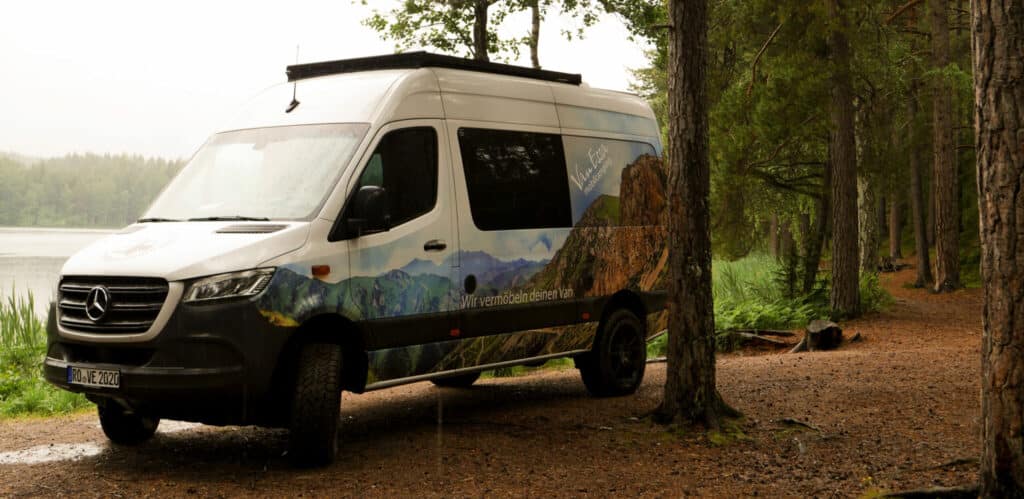

What do you need to look out for in the power supply to ensure that the car is always roadworthy?
A vehicle that has to supply several „power guzzlers“ (lights, heating, air conditioning, on-board computer, radio, etc.) will sooner or later need a way to recharge its battery(ies). We therefore recommend a charger for the battery(ies).
Here you will find specific information on various power options to suit your VW. If you purchase VanEssa equipment from us at the factory, we are happy to offer this service. For all other campers, we recommend contacting a vehicle electrician (there may be a BOSCH service near you).
Charger:

If you are wondering why a separate charger is needed for each battery, the answer is quite simple. Both batteries have separate circuits and their own power consumers.
The lights in the cockpit, the radio and the main power consumer, the on-board computer, are connected to the starter battery, which is needed to start the engine. This draws a large amount of power for three quarters of an hour every time, regardless of which door you open, even if the key is not in the ignition. So if you open and close the door a few times on a camping vacation (and this inevitably happens whenever you are in the car), it can quickly happen that the car no longer starts.
The on-board battery under the driver's seat is used by all 12V sockets and lights behind the B-pillar. In addition, the cool box and the air heater - if fitted - also require power from the on-board battery.

Second battery:
The first question here is whether you need a second battery at all. If you want to be self-sufficient and camp in the wild for a maximum of three days, you will definitely need a second battery to guarantee the power capacity. However, if you want to spend most of your time at the campsite and camp wild for a maximum of one night and the following day, one battery is perfectly adequate. A prerequisite is the possibility of recharging the starter battery afterwards at the campsite or at home using a charger or alternator during a longer (!) journey.
Inverter:
If you also need a 230V socket when you are on the move, you would need to have an inverter installed. This allows you to operate devices such as a laptop or chargers for cell phones, cameras, etc. without an external power supply. However, it should be noted that an inverter cannot supply all devices with sufficient power, such as a coffee machine, kettle or hairdryer, as the inverter cannot achieve the necessary peak current that these devices require. It is also important to be aware that an inverter can discharge the battery deeply in the long term or if it is not switched off. As most devices such as cell phones, tablets etc. can already be charged via 12V nowadays anyway, an inverter is only really necessary for certain purposes.



